Two Stroke Helicopter Engines Four Stroke
Two Strokes Or Four Strokes!!
What is the real difference?
Well! We know the mechanical difference, but there are also other differences

Auto engine conversions are popular for both fixed wing and rotary wing aircraft. Here is a car engine converted for gyrocopter use, and fitted with a turbocharger.
Two Strokes Or Four Strokes: With today’s technology and reliability of engine parts and components, it is surprising how many aircraft owners or builder shy away from two stroke or two cycle engines. They have been around for as long as anyone cares to remember, and there are probably more Ultra light type aircraft with then than with four stroke engines.
Aren’t they the engines that revolutionised the true Ultra light? Yet the same people barely hesitate to purchase or get in a boat, scooter or motorcycle with a two stroke, are they implying that they are more reliable on something that is land or water bound, or if something goes amiss then it is safer? Maybe!
After years of playing with four stokes mainly automobile engines and converting then for aircraft, I have come to realise that it is either a myth or more likely ill-informed publicity that has brought about the criticism of two strokes.
Nineteen out-landings in gyrocopters (must be some sort of record) with converted four stroke automobile engines caused by failures of different sorts, from blown head gaskets, blown, seized or cracked pistons, dropped vales, bent pushrods and rocker arms, even a faulty oil filter seal.
During that time spread of about eighteen years I have flown mostly with the same group of Gyronauts who all happen to have two stroke engines on their machines, one of them is sometimes referred to as two speed, because he only knows two speeds “Flat out and Stop” and that’s with a twenty year old single ignition engine.
From my recollections, not one of them have ever had an out-landing due to engine failure. The only one I can recall was not an engine failure but due to carby ice, unheard of with a two stroke but when you land alongside and see the frost and then the moisture dripping off the carburetors’ and air cleaner is proof enough that they too can ice up. Once everything dried up, the engine restarted and ran as normal.
A comparison needs to be put in perspective, I’m not advocating that one is better or worse than the other the choices are fundamental to the purpose of the aircraft and the conditions they are operating in, plus consideration needs to be given to the type of operation, the hours annually and of course justifiably the cost.
Firstly: Look at the differences between two strokes or four strokes. It’s not hard to understand why many choose the four stroke over the two stroke there are some wonderful very reliable four stroke engines available that are specifically built for sport and recreational aircraft, with plenty of power and reduced weight, but at a price, and subsequently they have a proven record of reliability. Add to that the longevity.

That is the time of hours of trouble-free service they accumulate and their TBO’s, this then also needs deliberation.
The cost of a rebuild or exchange; factors only the owner can account for.
The worst scenario of course is the cost of a replacement in the event of a complete engine failure.
Sometimes, but in most cases this doesn’t even come into the equation when purchasing a new aircraft, and what happens after the warranty period expires?
Especially if you have deep pockets, and is rarely considered even when purchasing a used aircraft, most only see it being more reliable because it is a four stroke.
Secondly: How many parts or moving and wearing parts are there in a four-stroke engine? What are the odds of a component failure? How many would need replacing in a rebuild? If it is a four cylinder engine which most are. On average there are in excess of 50 moving parts alone, a quick rundown.
1 x Crankshaft, 1 x Camshaft, 4 x Connecting rods, 4 x Pistons, 4 x Gudgeon pins, 8 x Valves, 8 x Pushrods, 8 x rocker arms, 8 x Valve lifters, 8 x Valve springs, 1 x Oil pump, 2 x Timing gears, plus water pumps on some, alternators and belts and there’s more. This not a complete list.
Then there are the wearing parts, such as crank bearings, conrod and gudgeon bearings, valve guides, cam bearings and the list goes on. It only takes one of these components to fail, and down is the only option! The odds are fairly obvious if numbers are anything to go by.
Of course the same applies to two stroke engines, any time anywhere a component can fail. But if we look at and count the number of moving parts in a two stroke by comparison. For example let’s say it is also a four-cylinder engine. There are as few as 17 moving parts such as 1x crank shaft, 4 x Connecting rods, 4 x Pistons, 4 x Gudgeon pins, there are no valves except some have reed or rotary valves so we’ll count then in. There are no push rods, camshafts, timing gears, valve lifters, or valve springs.
Most do not have separate alternators and some have water pumps or fan cooling. As for crankshaft, bit end and little end bearings. They are roller bearings in a two stroke and last much longer then slipper bearings, with less friction. In extreme conditions they can even run dry for limited periods or without oil because of the roller action.
Rather then the scraping action of a slipper bearing, which would quickly grind itself to destruction in a matter of seconds without oil. I have knows and heard of pilots, who have mistakenly run their engines without oil in the fuel mix with no damage, simply because they forgot to add oil to the fuel. Extra oil in the mix could be more harmful. Because the fuel octane numbers are reduced, thereby reducing power and can quickly foul the plugs.

Inverted two stroke aircraft engine fitted to a fixed wing aerobatic aircraft.
I can hear the distant howls of disagreement be they rational or not, this Is not about favouring one or the other, it is purely meant as a comparison, most have probably red or seen similar reference like this somewhere. It’s taken a long time to convince me that two strokes are not the demon that many have wrongly been criticized for.
I may be a convert, but I would still consider the circumstances and the purpose for which the aircraft is being used and then make the choice based on budget, location and hours that the aircraft would be operating.
Many of the problems with engines in most cases, is not the engine itself, but the owner operators. Too many as witnessed, tinker with the engines thinking they can improve something instead of leaving the recommended factory settings or not servicing them according to the manual.
Then there are the lazy ones who will leave the service till next time, or not bother with them at all, and this is where the majority of the bad publicity especially with two strokes comes from. What is so difficult about changing a fuel filter and washing an air cleaner or changing a couple of spark plugs, you have to do that with a four stoke engine also, or are four stroke owners more diligent and forgiving. I think not!
Not to mention the extra oil and filter changes on a four stroke. But of course there is the huge problem for some. Like measuring a few millilitres of two-stroke oil and mixing it with the petrol each time the aircraft needs refuelling, or adding oil to the injection bottle. Its no harder or difficult than pulling out a dipstick to check the oil in the sump and adding a few mills’ to top it up, isn’t that what everyone does or supposed to do each time they fill up?
Two Strokes Or Four Strokes
Another problem sometimes is; the two-stroke engine seizes when powered on after a long glide. The reason for this I believe is mistakenly blamed on the engine having cooled down too much, this can be the cause if the throttle is fully opened too quickly to power up and climb. We do warm the engines gradually when first starting up don’t we!
The real cause is due to the throttle being in the idle or near closed position for a long period during glide. This then means that the two stroke engine is running very lean and because of the oil mixed fuel, it is not inhaling sufficient oil mix on a long glide to keep the pistons and rings sufficiently lubricated.
Although the throttle may be shut back to idle, the forward speed keeps the propeller spinning at a speed higher than a set throttle speed and subsequently also the engine revolutions are at a high revolution. This can be almost the same as running the engine without oil.
Think about it! Because it can also happen in a four stroke, not due to lack of oil pressure, but the lean mixture in the combustion chambers, which brings combustion temperatures to melting point, which can cause detonation. A good testament to this is, if you ever get the chance to glide for some distance or time, all the way to the ground at idle without resetting the throttle and stop immediately.
Remove a spark plug or two and there you will see the carbon deposits have turned a very light grey, or almost white on the tips of the plugs, and can also burn away some hardened carbon deposits. This will indicate the engine has been running in a very lean condition in the glide.

Hirth 4002 120HP water cooled two stroke four cylinder EFI aircraft engine
I discovered this many years ago (early sixty’s) when I was driving a fully loaded petrol engine International truck, after a long slow run down Mount Victoria, Australia in low gear to hold it back to avoid burning the brakes.
At the bottom of the hill when I needed to accelerate, the engine began miss firing and wasn’t firing on all cylinders. Stopping to investigate revealed that the tips or the electrodes of the spark plugs were burnt and melted away.
Future trips down long descents made me way of the consequences, and I occasionally accelerated or gave the engine a bit of throttle. Then learned the best way was to pull the choke on part way, which allowed a bit of excess fuel and ran it a bit rich, thereby preventing too lean a mixture and consequent detonation.

This trick could be well worth a try if your engine is fitted with carburettors and a manual choke, but be careful not to over do it or you could flood or choke the engine and have a problem restarting. This should and could work particularly well also with two strokes, and will also ensure the bottom and top end gets some lubrication.
The guys with the gyrocopters never seem to have this problem with the decision of two strokes or four strokes, because their glide distances aren’t for long periods. One other problem is fuel. If the incorrect octane or low octane fuel is used then you are asking for trouble. Without going into the detail, I’m sure everyone would have been advised by his or her owners’ manual the importance of using the correct fuel.
Storage of fuel especially if it is premixed and exposed to air, as is the case with fuel in any fuel tank, is prone to deteriorate, they do have a breather, which allows air in and out allowing the fuel to expand and contract.
| CAM 100 TECHNICAL SPECIFICATIONS | |
|---|---|
| Type | four-cylinder, four-stroke, in-line, liquid-cooled. overhead camshaft, normally aspirated. |
| Displacement | 1488 cc (90.7 in 3) |
| Power Output | 100 hp (75 kw) at propeller flange |
| Reduction Ratio | 2.4 1 (6000 rpm engine/2500 rpm prop) |
| Bore | 74mm (3.07 in) |
| Stroke | 86.5mm (3.41 in) |
| Max full power run time | five minutes |
| Weight | 224.3 lbs (101.9 kg) (See weight specification sheet) |
| Direction of rotation | Clockwise (looking at face of prop flange) |
| Fuel Required | 90 octane unleaded minimum (R + M)/2. Can also us e 100LL aviation gasoline |
| Cooling | Water-glycol mixture. (Water pump driven by camshaft belt.) |
| Cylinder Head | One-piece, aluminum. cross-flow design |
| Block | One-piece aluminum with reborable cast-iron liners |
| Compression Ratio | 9.2:1 |
| Crankshaft | Fully girded, hardened, five main bearings of precision insert type |
| Camshaft | Cast alloy, head treated, parkerized |
| Lubrication | Full pressure, internal gear-type pump wet sump |
| Oil Quantity | 3.5 liters (3.7 US quarts) |
| Ignition | Dual digital electronic ignition with programmed automatic advance feeding single plug/coil units |
| Alternator | 15 Amp direct drive |
| Carburetion | Two-barrel progressive opening downdraft |
| Mixture Control | Back suction type controlled from instrument panel |
| Reduction System | 100mm (3.93 in) HTD cog belt |
| Fuel Consumption | specific 0.41Ib/bhp/hr @ 80 percent power |
| Oil Type | 5W30 synthetic |
| Starting System | Electric gear reduction starter |
Yes it is true that petrol with an oil mix loses much of its octane rating, and deteriorates even more within a short time, especially in plastic containers. Importantly, let’s be “Fair Dinkum” another wrongful myth regarding two stroke engines is: Why they don’t last needs to be put in proper perspective.
Majority of two stroke engines in aircraft are probably right on the limit of their horsepower and capacity for certain aircraft, and again it is especially unfair to compare the reliability of an 80 or 100 horsepower four stroke to a 50 or 65 horsepower two stroke in an aircraft that is of the same build, type, weight and capacity and is required to do the same task.
We’re talking per cent. It doesn’t take a scientist or mathematician to work out which one has the advantage. A fifty or sixty five hp, engine which is of smaller capacity, at full power naturally has to work harder and will take longer to get to the same altitude and speed as the 100hp engine aircraft, and again if the set cruise speeds are the same, still the lesser hp engine is using a higher percentage of its power and engine revs’ to maintain the same speed. Let’s also compare the cubic capacity of the engines.

Simonini two stroke two cylinder aircraft engine.
Usually the two strokes’ are about or less than half the size of the four strokes’, but produce more power per cubic than a four-stroke engine. Therefore, it stand to reason that theoretically and practically, of course the smaller engine may not last as long if it is expected to perform under the same working conditions. The key is Power to Weight ratio.
Take two motorcycles for example of the same type and frame weight, with the same power. One is fitted with a two stroke, which is obviously lighter, and the other with a four stroke, which is intrinsically heavier. Now race the two around a racetrack. I know which one would be the quicker, purely because of its weight advantage.
If we are to be realistically fair, then as the saying goes, we must compare apples with apples or in this case overall power. There are many wonderful machines including some very nice little kit helicopters that run two stroke engines very successfully, but in some cases they are worked almost constantly right on their limit or at full power, or over worked, how long can any engine last when its worked at its maximum?
When they removed the Rotax and installed the Air-motive 100, the extra power added a little left turn to the aircraft.
On the other hand, if the craft is fitted with an engine with power to spare be they four stroke or two stroke and a portion of it is used to maintain mobility, then it stands to reason it will and should last longer. Furthermore, if the cc’s or capacities were the same, it’s not hard to work out which would have the advantage.
The majority of the two cycle engines used are around half the capacity and size of the four-cycle engines but produce more power per cubic capacity. But the unfortunate consequence is they also use a bit more fuel, because they are made to work a bit harder. So if you are worried above fuel consumption, don’t fly! You obviously can’t afford to, and so what if they do use up to ten or twenty per cent more fuel.
In the long run if we weigh up the cost difference of the two types of engines and calculate the fuel consumption again the difference in cost of the engines, It would take a long time to catch up the difference in cost of litres per hour used, compared to the initial difference in cost of the two types of engines.
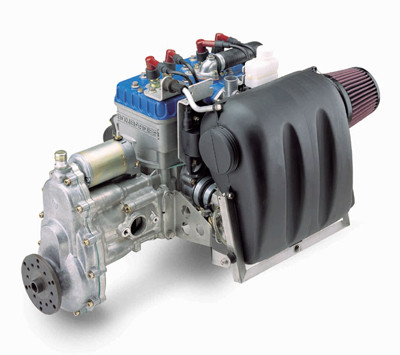
Let’s also consider the revolutions. Sure a two cycle engine revs’ higher, the popular and most used ones, rev to a maximum of 6,500rpm or 6,700rpm, whereas the popular four cycle engines rev to a maximum of 5,800 rpm. The difference is only around 1,000rpm. Oh and by the way! We’re talking about engines with a speed reduction unit or gearbox, and engines that produce the same horsepower.
This does not necessarily mean that the higher the revolution engine is doing it harder. On the contrary! It actually should be calculated on piston speed, cubic area and distance the pistons travel or area covered per minute at maximum revs’ for the ‘given power’.
For example: A two cylinder, two stroke engine producing the same power with a stroke of say 76mm each will travel 509 metres each way up and down the bore in one minute at 6,700rpm a total of 2036 metres for the two pistons.
The four pistons’ of a four-cylinder engine producing the same power although with a lesser stroke of 61mm each at 5,800 rpm will travel a total distance of 2830 metres. The four-cycle engine would struggle to produce the same power if it were the same cylinder capacity.
To make up for the discrepancy, the bore sizes on a four-cycle engine are larger and end up around twice the capacity of a two-stroke to compensate for the difference. So you would then need to factor in the total area the pistons would travel and that would amount to a much larger wear area. Then they need to drive all the other items, such as cams, valves, etc.

Considering dollar per horsepower value could also be another comparison. For example; if we were to compare some different power plants. The cost of converting and reconditioning an automobile engine with a propeller speed reduction unit, with its accessories plus labour and conversion cost would be somewhere in the vicinity of around $10,000.00 – and would probably have no warranty.
Whereas; New aircraft engines do carry warranties and range in price depending on the size and rated power. Thus; an auto engine with around 120hp. Although the cheapest, it also carries the penalty of being the heaviest – about 150kg including accessories and could be calculated at a cost as follows not including installation.
These price – weight comparisons are close to the actual, but only approximates.
- Auto-engine
- 120 hp $83.00 per hp and 0.80 per engine kilogram
- Aircraft four stroke
- 80 hp $230.00 per hp and 1.15 per engine kilogram
- Aircraft four stroke
- 100 hp $240.00 per hp and 1.43 per engine kilogram
- Aircraft two stroke
- 65 hp $152.00 per hp and 1.20 per engine kilogram
- Aircraft two stroke
- 102 hp $122.00 per hp and 2.10 per engine kilogram
There are now a variety of two-stroke engines specifically designed for aircraft that are 100hp plus and after flying and testing them, my feelings toward their ability performance and reliability, has grown with confidence. I have deliberately not mentioned any brand names. Those interested enough would do their own search.
As stated before, if you have a 100hp. Engine and power to spare then it is quite clear, that they are going to do the job and what is expected of them a lot easier, and naturally they will last longer. Just as long as any four-stroke engine with the same power.
Bear in mind, that if you are going to use all that power all of the time, then you can expect they won’t last as long. It is more expensive to purchase a more powerful engine in the first instance, but if you want reliability and performance.
Then hopefully the choice is clearer.

Hirth ultralight helicopter – plenty of power for the single seat aluminium airframe helicopter.


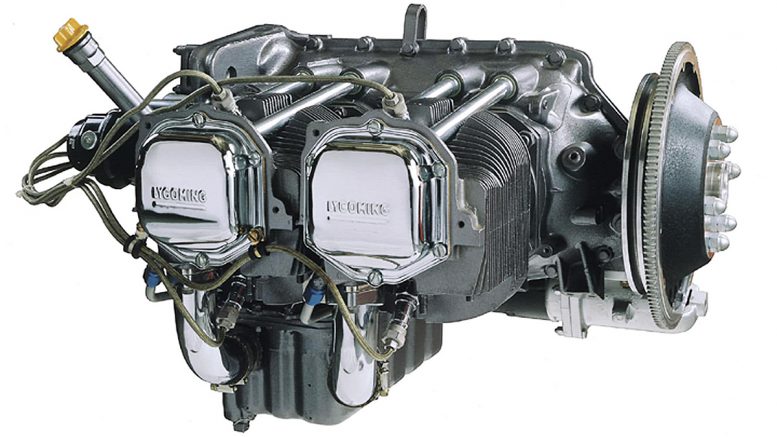
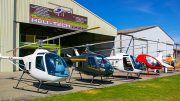
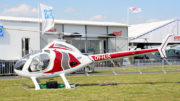
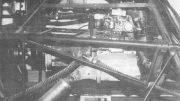
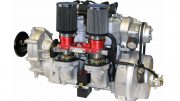
Be the first to comment on "Two Strokes Or Four Strokes – What is the real difference?"